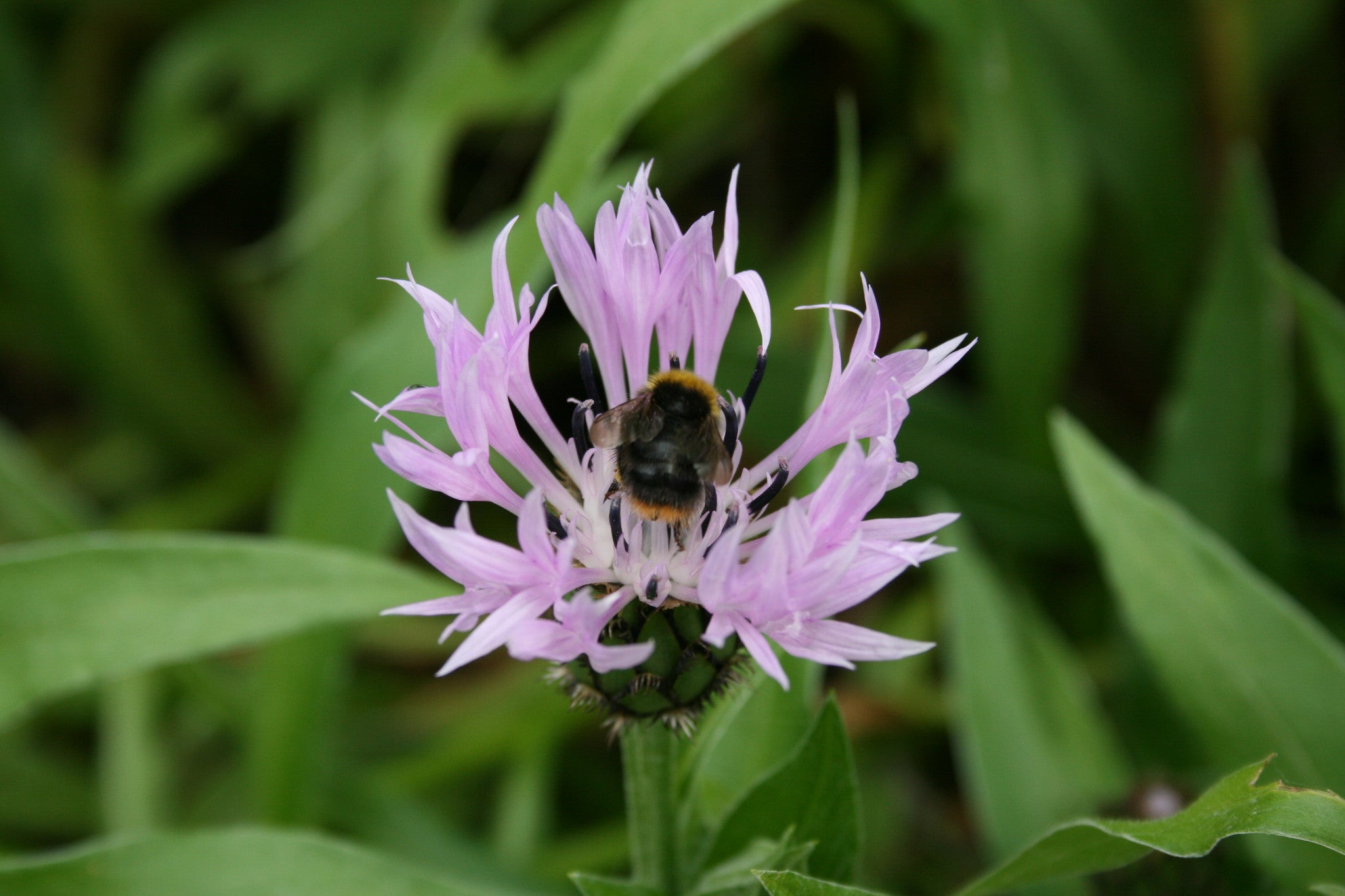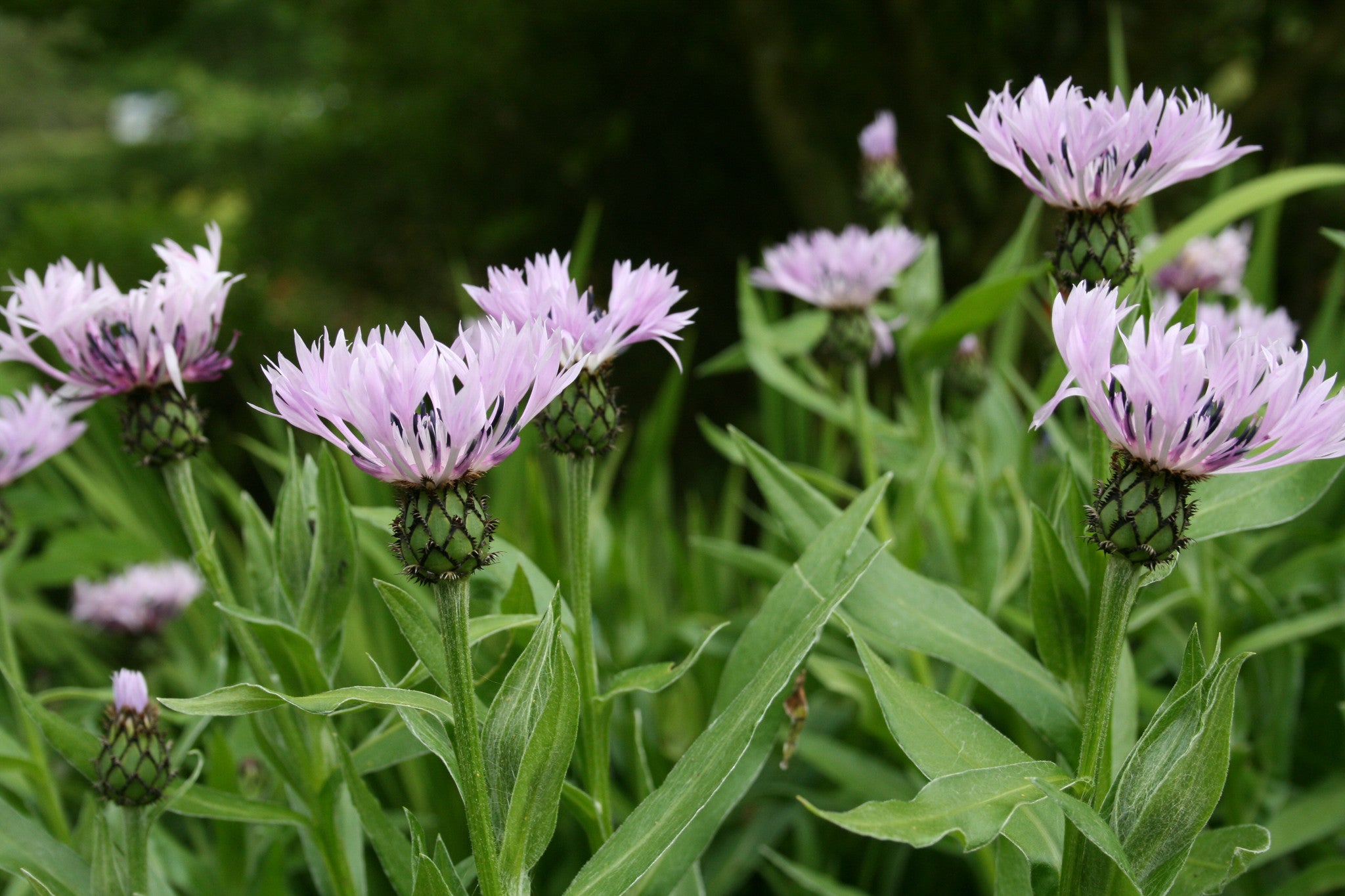Centaurea montana 'Carnea'
Approx. 0.5 litre pot
About this cultivar:
Centaurea montana 'Carnea' is the only pink montana cultivar that I know about (flood of emails ensues....). One that we also sell a lot of (perhaps because it is the only pink?...). Carnea was was the name of one of the great national festivals of Sparta held in honour of Apollo Carneus, although I'm not sure what that has to do with this plant. Did I mention that it is pink?!?
- Position: Full sun, partial shade
- Soil: Almost any soil, grows well in Ballyrobert
- Flowers: May, June, July
- Other features: Grows well in Ballyrobert, Bees and Butterflies, Great Ground Cover
- Hardiness: Fully hardy - grows well in Ballyrobert!
- Habit: Bushy, Clump forming
- Foliage: Deciduous
- Height: 15 - 45 cm (0.5 - 1.5 ft)
- Spread: 15 - 45 cm (0.5 - 1.5 ft)
- Time to full growth: 2 to 5 years
- Plant type: Herbaceous Perennial
- Colour: Pink, green
-
Goes well with: Anything (in my opinion). try Erigeron, Geranium, Nepeta, Perovskia, Dianthus.
About this genus:
Centaurea is a genus of between 350 and 600 species of herbaceous thistle-like flowering plants in the daisy family (Asteraceae). Members of the genus are found only north of the equator, mostly in the Eastern Hemisphere; the Middle East and surrounding regions are particularly species-rich. Common names for this genus are legion: centaury, centory, starthistles, knapweeds, cornflower, basket-flower, loggerheads, bluets and bachelor button (to name a few).
Centaurea are robust often-spiney-leaved plants with "flowers" (actually pseudanthium inflorescences) that are diverse in colour, ranging from intense blues, reds and yellows to any mixture of these and lighter shades towards white. The "flower" shapes also vary with some flowers resembling thistles (Circsium)- or is it vice versa? Also, these 'flower' heads will provide interest for several months after the flowers have faded.
Many Centaurea have a reputation as an invasive weed that seeds everywhere and spreads-via-taproot. However, never fear, we only grow and offer the well behaved perennial, almost sterile cultivars from this large genus that will be perfect for almost any garden. They tolerate almost any soil and any situation except deep shade. They are so good for wildlife and bio-diversity that farmers are advised to plant them in and around their fields and crops (in our case they just become rather expensive food for the cattle).
What do they look good with? Well that depends on personal preference- their flower colour and shape can vary! I find they do well in almost any perennial border, in and around paths and walls and at the edge of woodland areas. Keep an eye on our photos for ideas - we have them near Caltha, Brunnera and Polygonatum but really only because of the colour!






